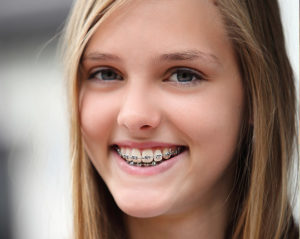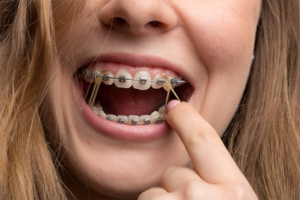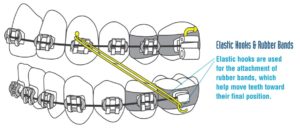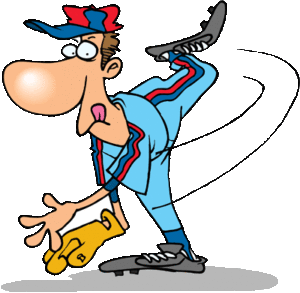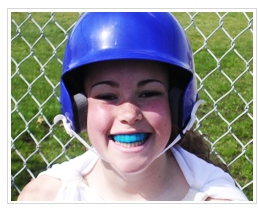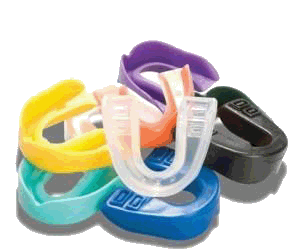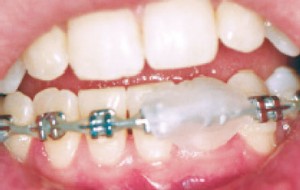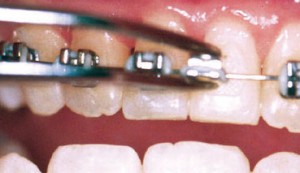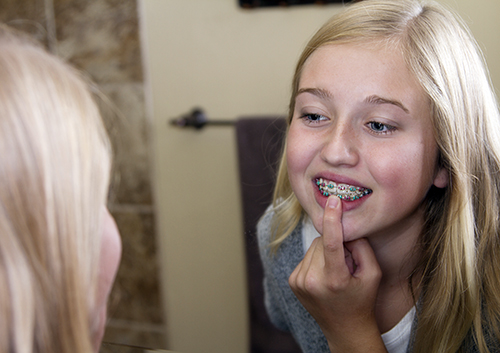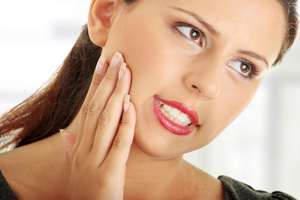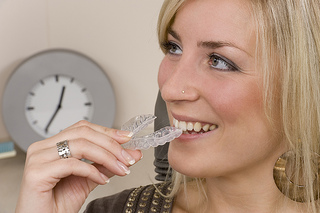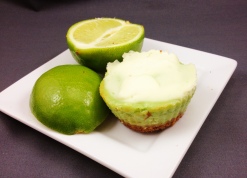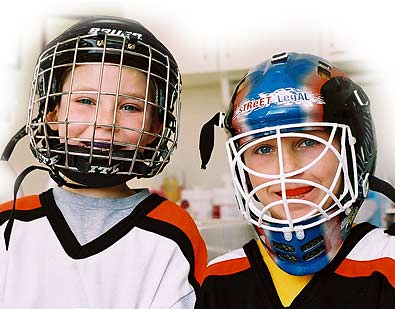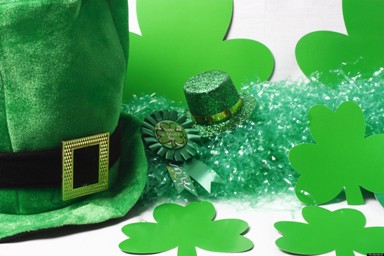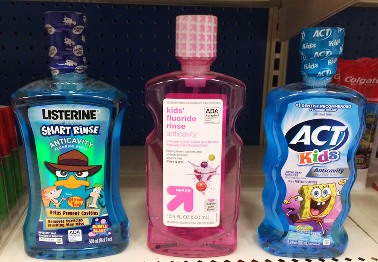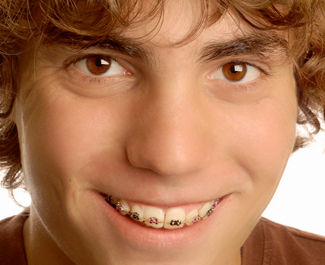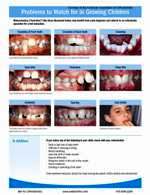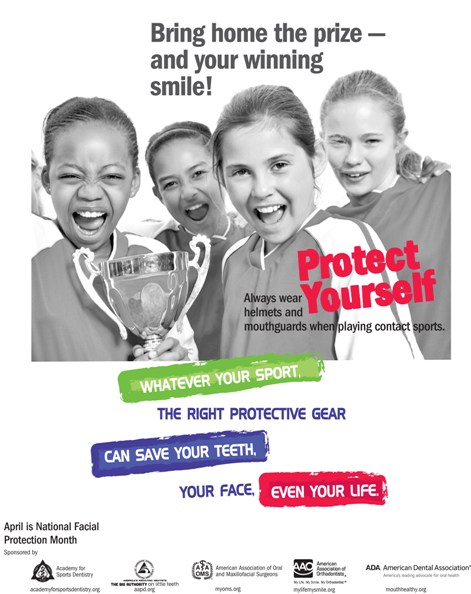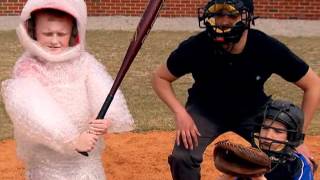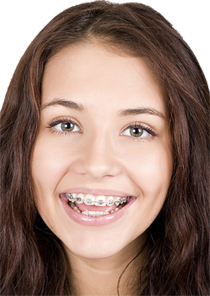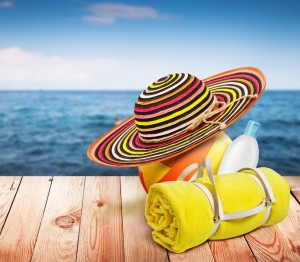Top Ten Ways To Keep Your Retainers Safe This Summer
June 25th, 2025
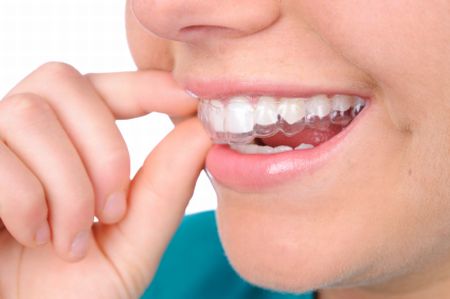
Summer is in full swing! It’s time for lazy days on the beach, summer cookouts and family vacations. But before you rush out the door to your next summer adventure, the team at Bel Air Orthodontics wants to remind you about the importance of keeping your retainer and your smile safe this summer.
Here's a fact: More retainers are lost over the summer than any other time of the year! Why, you ask? There a number of factors, but it comes down to the fact that your retainer is spending too much time out of your mouth! Summer fun brings a change in your daily routine, more meals with family and friends, and that usually means more opportunities to lose, break or forget your retainer.
Your retainer is an important part of your orthodontic treatment, so follow these tips to keep your retainer and your smile looking great:
- Never Wrap It In A Napkin - While a retainer on the table might not be the most appetizing sight, hiding it in a napkin is a quick and sure way to accidentally send your retainer into the trash can!
- Keep It Away From Fido – It’s a fact, dogs love the smell and taste of saliva on retainers, and they’ll go to impressive lengths to get their canines on them. Never leave your retainers on a night stand, counter, or table where they can jump up and snag the appliance. Remember, dogs like to chew on things . . . this includes retainers!
- Don’t Be Random – While spontaneity is a good thing in life, it’s a bad thing when it comes to storing your retainer. If you put your retainer in random places, you’re bound to eventually forget where it is. Instead, create designated spots to keep your retainer. Whether it’s the same spot in your purse or backpack, a special drawer in your bedroom, or a cabinet in the kitchen, you’ll always know where it is.
- Take Them Out When Swimming – More than one retainer has ended up lost in the ocean surf, the bottom of a lake or public pool. Don’t let the next one be yours!
- Don’t Put It In Your Pocket - Your retainer is more fragile than you think. Placing it in your pocket often leads to loss or breakage. Just imagine the look on your Mom’s face when she discovers that she tossed that pair of jeans or jacket in the washer and dryer without knowing the retainer is tuck away in the pocket. Let’s just say that story doesn’t end well.
- Don’t Throw It In Your Sports/Gym Bag – Let’s face it, your smelly gym bag is no place for your retainer! Picture the contents of that gym bag . . . dirty sneakers, empty food wrappers, and a host of other undesirable things. Once your retainer is in there, you’re likely to damage, forget or misplace it.
- Clean It With Luke Warm – NOT HOT WATER - While keeping your retainer clean and bright is important, never use hot water to clean it or boil it to sterilize. Heat will distort and damage your retainers. Instead, soak your retainers in a denture cleaning product like Efferdent® once a week to keep them clean.
- Don’t Leave It In The Hot Car – Temperatures in a closed car during the summer can reach temperatures in excess of 130 degrees. Retainers will melt in these temperatures, so remember to take them with you.
- Label Your Retainer Case – If you do happen to misplace your retainer, your chances of having someone return it are much greater if your name, phone number and/or email address are on the case.
- Don’t Forget To Wear It – If you are wearing your retainer when you’re supposed to, you’re much less likely to lose it. Make wearing your retainer as prescribed your new healthy habit!
- Always Keep Your Retainer In Its Case When Not In Your Mouth – This is Dr. Stephen Godwin’s number one rule! Your case is designed to keep your retainer safe when it’s not in your mouth, so remember to use it.
If you do happen to have a retainer mishap over the summer, make sure you contact us as soon as possible so that we can schedule an appointment to make a replacement appliance. Remember, every day that your retainer is not being worn, tooth movement is occurring. So don’t delay, call the team at Bel Air Orthodontics today if you have any questions about your retainer wear and care. We hope you have a safe, fun-filled summer!




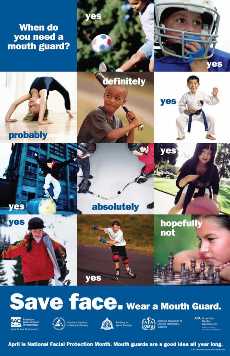

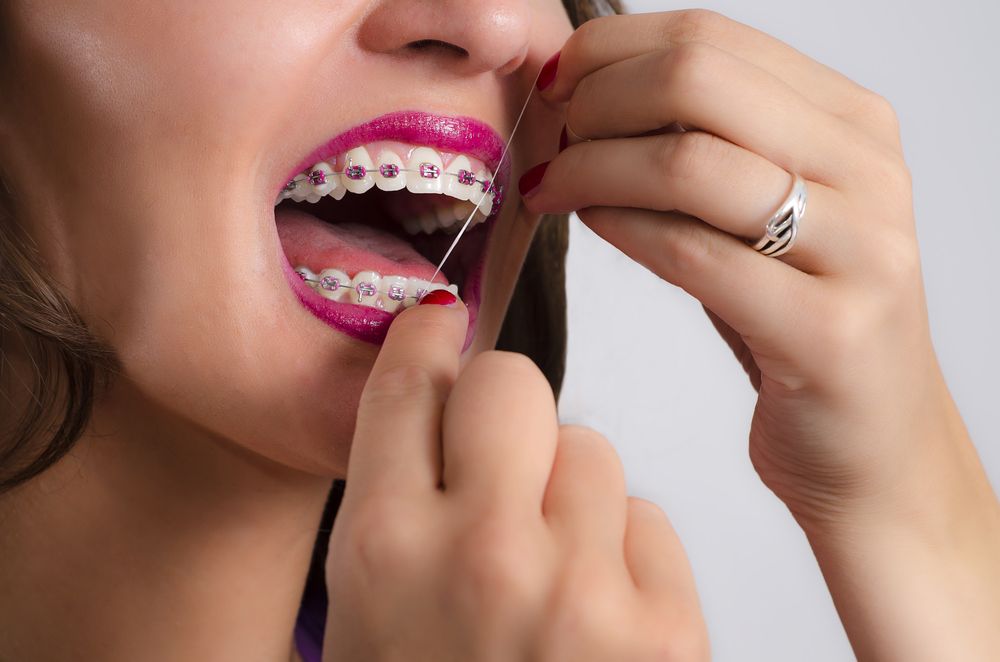
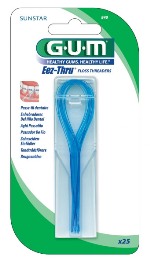
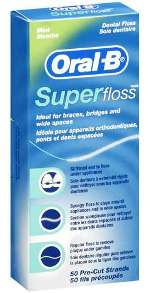




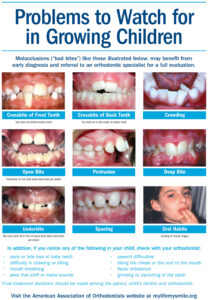




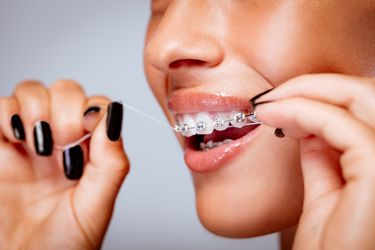





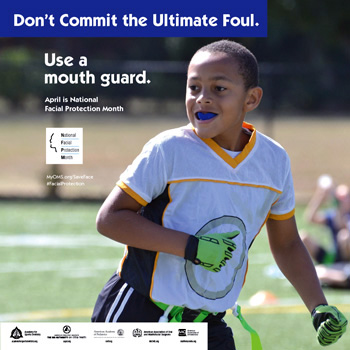
 The busy holiday season is just around the corner, and so are the social activities and parties that go with it. It's also a time when Bel Air Orthodontics is busy replacing broken or lost retainers. Why you ask? There a number of factors, but it comes down to the fact that your retainer is spending too much time out of your mouth! Holiday fun brings a change in your daily routine, more meals with family and friends, and that usually means more opportunities to lose, break or forget your retainer.
The busy holiday season is just around the corner, and so are the social activities and parties that go with it. It's also a time when Bel Air Orthodontics is busy replacing broken or lost retainers. Why you ask? There a number of factors, but it comes down to the fact that your retainer is spending too much time out of your mouth! Holiday fun brings a change in your daily routine, more meals with family and friends, and that usually means more opportunities to lose, break or forget your retainer. Halloween is a fun time of year, but before you head out to trick-or-treat, Dr. Godwin would like to offer a few tips for keeping your braces healthy and happy. While Halloween treats are tempting, it's important to remember that many can cause havoc for trick-or-treaters with braces. Treats that are sticky, chewy, hard or crunchy can potentially cause damage to braces, clear aligners, and other orthodontic appliances. In addition to patient discomfort, a broken bracket or loose wire may prolong treatment and require additional appointments.
Halloween is a fun time of year, but before you head out to trick-or-treat, Dr. Godwin would like to offer a few tips for keeping your braces healthy and happy. While Halloween treats are tempting, it's important to remember that many can cause havoc for trick-or-treaters with braces. Treats that are sticky, chewy, hard or crunchy can potentially cause damage to braces, clear aligners, and other orthodontic appliances. In addition to patient discomfort, a broken bracket or loose wire may prolong treatment and require additional appointments.
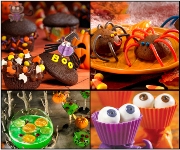
 Every October, the American Association of Orthodontists (AAO) takes the spotlight during National Orthodontic Health Month. It’s a time when orthodontists reach out to patients and their community to increase public awareness about the benefits of orthodontic care.
Every October, the American Association of Orthodontists (AAO) takes the spotlight during National Orthodontic Health Month. It’s a time when orthodontists reach out to patients and their community to increase public awareness about the benefits of orthodontic care. With the start of a new school year, parents and kids everywhere are heading out to stock up on back-to-school supplies. If you're undergoing orthodontic treatment, we'd suggest adding a few extra supplies to your backpack. Here's a list of items that will help make your school year braces-friendly and worry free:
With the start of a new school year, parents and kids everywhere are heading out to stock up on back-to-school supplies. If you're undergoing orthodontic treatment, we'd suggest adding a few extra supplies to your backpack. Here's a list of items that will help make your school year braces-friendly and worry free: Summer is in full swing! It’s time for lazy days on the beach, summer cookouts and family vacations. But before you rush out the door to your next summer adventure, the team at Bel Air Orthodontics wants to remind you about the importance of keeping your retainer and your smile safe this summer.
Summer is in full swing! It’s time for lazy days on the beach, summer cookouts and family vacations. But before you rush out the door to your next summer adventure, the team at Bel Air Orthodontics wants to remind you about the importance of keeping your retainer and your smile safe this summer. According to the American Dental Association, a person’s smile outranked eyes, hair and body as the most important physical feature. While smiling is a great way to get yourself noticed, it turns out that it can also help your body function better. Since June is National Smile Month, we thought it would be a great time to share some good reasons to show off your pearly whites:
According to the American Dental Association, a person’s smile outranked eyes, hair and body as the most important physical feature. While smiling is a great way to get yourself noticed, it turns out that it can also help your body function better. Since June is National Smile Month, we thought it would be a great time to share some good reasons to show off your pearly whites: When most people think about orthodontics, they imagine teenagers getting their first set, or adults who want to correct their smiles later in life. Rarely does the thought take you to a child who still has some baby teeth in their mouths. With that in mind, it may surprise you to learn that some developmental problems are best treated at any early age, often in two separate phases.
When most people think about orthodontics, they imagine teenagers getting their first set, or adults who want to correct their smiles later in life. Rarely does the thought take you to a child who still has some baby teeth in their mouths. With that in mind, it may surprise you to learn that some developmental problems are best treated at any early age, often in two separate phases. We've all heard the old saying, "You are what you eat", but did you know that it's just as important for your teeth as it is your body? Your choice of drink has a big impact on your waistline as well as your dental health. A study from the University of Maryland Dental School found that soft drinks (diet or regular soda), fruit drinks, sports drinks and energy drinks weaken tooth enamel. They are even harder on your teeth if your are wearing orthodontic appliances such as braces, retainers or aligners.
We've all heard the old saying, "You are what you eat", but did you know that it's just as important for your teeth as it is your body? Your choice of drink has a big impact on your waistline as well as your dental health. A study from the University of Maryland Dental School found that soft drinks (diet or regular soda), fruit drinks, sports drinks and energy drinks weaken tooth enamel. They are even harder on your teeth if your are wearing orthodontic appliances such as braces, retainers or aligners.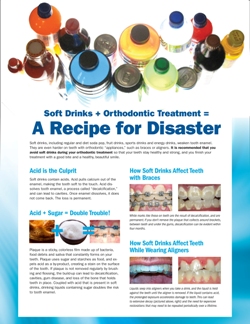
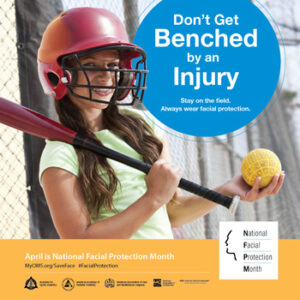 April is National Facial Protection Month, and the team at Bel Air Orthodontics want to remind parents, coaches and athletes to play it safe as they prepare to suit up for both recreational and organized sports. Whether at practice, at a game, or simply enjoying some fun in the neighborhood, a sports-related injury can happen in an instant. That's why it's important to take precautions to protect your face and teeth from injury. Dr. Godwin suggests you take these simple steps to prevent injuries so you can stay in the game:
April is National Facial Protection Month, and the team at Bel Air Orthodontics want to remind parents, coaches and athletes to play it safe as they prepare to suit up for both recreational and organized sports. Whether at practice, at a game, or simply enjoying some fun in the neighborhood, a sports-related injury can happen in an instant. That's why it's important to take precautions to protect your face and teeth from injury. Dr. Godwin suggests you take these simple steps to prevent injuries so you can stay in the game:
 February is National Children's Dental Health Month, and the team at Bel Air Orthodontics want to remind everyone about the importance of good oral hygiene and the role it plays in the health of your teeth and the success of your orthodontic treatment.
February is National Children's Dental Health Month, and the team at Bel Air Orthodontics want to remind everyone about the importance of good oral hygiene and the role it plays in the health of your teeth and the success of your orthodontic treatment. With the start of a new school year, parents and kids everywhere are heading out to stock up on back-to-school supplies. If you're undergoing orthodontic treatment, we'd suggest adding a few extra supplies to your backpack. Here's a list of items that will help make your school year braces-friendly and worry free:
With the start of a new school year, parents and kids everywhere are heading out to stock up on back-to-school supplies. If you're undergoing orthodontic treatment, we'd suggest adding a few extra supplies to your backpack. Here's a list of items that will help make your school year braces-friendly and worry free: One of the big rites of passage for young adults is wisdom teeth removal. Of course, there are people who can actually fit those third molars in their jaws comfortably and there are a startling number who don’t even grow them in the first place, but for people who do need their wisdom teeth removed, it’s fun to post pictures of their swollen cheeks and videos of anesthesia antics while enjoying lots of ice cream and smoothies. So what’s the deal with these teeth so many people need removed?
One of the big rites of passage for young adults is wisdom teeth removal. Of course, there are people who can actually fit those third molars in their jaws comfortably and there are a startling number who don’t even grow them in the first place, but for people who do need their wisdom teeth removed, it’s fun to post pictures of their swollen cheeks and videos of anesthesia antics while enjoying lots of ice cream and smoothies. So what’s the deal with these teeth so many people need removed? School is out and summer vacations are just around the corner. Vacations are all about fun, so the last thing you want to do during your summer vacation is to think about or deal with an orthodontic emergency. Don't worry, we've got you covered. Here are a few helpful reminders to keep your orthodontic appliances in check:
School is out and summer vacations are just around the corner. Vacations are all about fun, so the last thing you want to do during your summer vacation is to think about or deal with an orthodontic emergency. Don't worry, we've got you covered. Here are a few helpful reminders to keep your orthodontic appliances in check: According to the American Dental Association, a person’s smile outranked eyes, hair and body as the most important physical feature. While smiling is a great way to get yourself noticed, it turns out that it can also help your body function better. Since June is National Smile Month, we thought it would be a great time to share some good reasons to show off your pearly whites:
According to the American Dental Association, a person’s smile outranked eyes, hair and body as the most important physical feature. While smiling is a great way to get yourself noticed, it turns out that it can also help your body function better. Since June is National Smile Month, we thought it would be a great time to share some good reasons to show off your pearly whites: We've all heard the old saying, "You are what you eat", but did you know that it's just as important for your teeth as it is your body? Your choice of drink has a big impact on your waistline as well as your dental health. A study from the University of Maryland Dental School found that soft drinks (diet or regular soda), fruit drinks, sports drinks and energy drinks weaken tooth enamel. They are even harder on your teeth if your are wearing orthodontic appliances such as braces, retainers or aligners.
We've all heard the old saying, "You are what you eat", but did you know that it's just as important for your teeth as it is your body? Your choice of drink has a big impact on your waistline as well as your dental health. A study from the University of Maryland Dental School found that soft drinks (diet or regular soda), fruit drinks, sports drinks and energy drinks weaken tooth enamel. They are even harder on your teeth if your are wearing orthodontic appliances such as braces, retainers or aligners. It's National Dental Health Month, and the team at Bel Air Orthodontics thought it would be a great time to share some oral hygiene tips.
It's National Dental Health Month, and the team at Bel Air Orthodontics thought it would be a great time to share some oral hygiene tips. It's that time of year again; a time when we're thinking about those all too familiar New Year's resolutions. Promising to spend less, exercise more and clear the clutter are often at the top of our list, but this year the team at Bel Air Orthodontics has decided to keep our New Year's resolutions easy and entertaining. We've vowed to laugh more, smile often and have more fun. In the spirit of that fun, we came up with a few resolutions for our patients in orthodontic treatment. Tell us what you think, and share your own New Year's resolutions with us on our
It's that time of year again; a time when we're thinking about those all too familiar New Year's resolutions. Promising to spend less, exercise more and clear the clutter are often at the top of our list, but this year the team at Bel Air Orthodontics has decided to keep our New Year's resolutions easy and entertaining. We've vowed to laugh more, smile often and have more fun. In the spirit of that fun, we came up with a few resolutions for our patients in orthodontic treatment. Tell us what you think, and share your own New Year's resolutions with us on our 